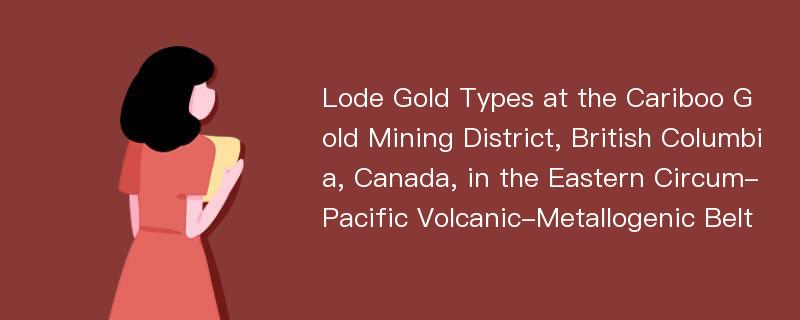
论文摘要
The Cariboogold mining district is situated within the Quesnel Highlands on the eastern edge of the Interior Plateau in central British Columbia, Canada of the Eastern Circum-Pacific Volcanic-Metallogenic Belt. Recorded gold production from the area totals more than 4.0 million ounces, including an estimated 2.7 million ounces from placer mining from 101 creeks and 1.3 million ounces from lode mining. The Quesnel Highlands are the remnants of rolling plateau formed initially from bedrocks lain down as the ancient North American Plate moved westwards colliding with offshore seabed and island groups. The bedrocks were then overlain by lava flows emanating from Chilcotin volcanoes that filled the lowlands between the Coast and northern Rocky Mountains(Cariboo Mountains). The Cariboo mining district within the Southern Cordillera region is situated within the Cariboo Gold Belt, a world-class producer of gold that has had a history of mining dating from the Cariboo Gold Rush in the 1860’s. Thedistrict encompasses(from northwest to southeast) the former producing Hardscrabble WAu Mine, Mosquito Creek, Aurum, Island Mountain, Cariboo Gold Quartz, Bonanza Ledge, QR, Cariboo Thompson, and Cariboo Hudson Gold Mines. The district lies within several Terranes of the Omineca Belt of the Canadian Cordillera. The Terranes consists of lower grade metamorphicgreen schist facies of the late Proterozoic and/or Paleozoic sequence of continental shelf and slope deposits developed adjacent to the craton of Ancestral North America, and includes clastic sedimentary rocks along with lesser amounts of volcanic rocks and carbonates. Stratigraphic position, host rock lithologies and proximity to north-striking fault zones are important guides to different styles of gold mineralization recognized in the district. The mineralization is probably stratabound, in that each style is confined for the most part to a particular section of the local stratigraphy. Historical production has been from mesothermal pyrite-bearing quartz vein systems that cut turbiditic rocks, and from semi-massive to massive pyrite replacement type bodies that occur in carbonate-rich rocks structurally higher but stratigraphically lower in the sequence. The area is underlain by a northwest striking, moderately northeast dipping sequence of rocks on the steep, overturned limb of a southwest-verging antiform, which, in turn, is on the northeast flank of the Island Mountain anticlinorium. The area is underlain by the Baker, Rainbow, BC, Lowhee and Basal Units. The Baker and upper Rainbow Units are part of the Downey Succession and the lower Rainbow, BC, Lowhee and Basal Units, comprise part of the Hardscrabble Mountain Succession. Structuresdeveloped in the district include at least three phases of deformation and folding. Faults and shear zones developed in the area are of several generations and orientations including north trending faults and strike faults. There are five principal types of lode gold depo
论文目录
文章来源
类型: 国际会议
作者: JIAN Zhaoyin
来源: 第九届世界华人地质科学研讨会 2019-06-01
年度: 2019
分类: 基础科学,工程科技Ⅰ辑
专业: 地质学,矿业工程
单位: Orient Resources Ltd.
分类号: P618.51
DOI: 10.26914/c.cnkihy.2019.028296
页码: 41-42
总页数: 2
文件大小: 63k
下载量: 2
